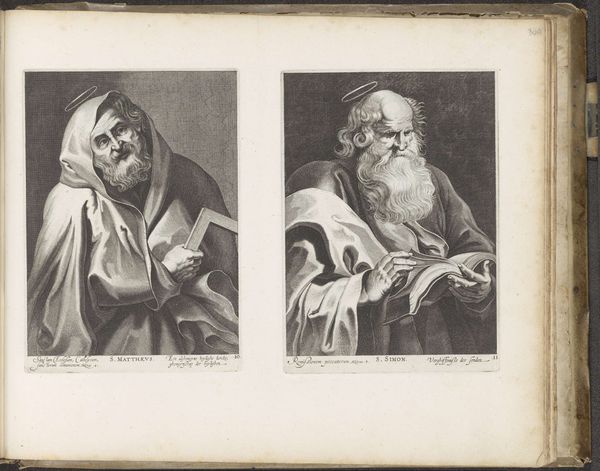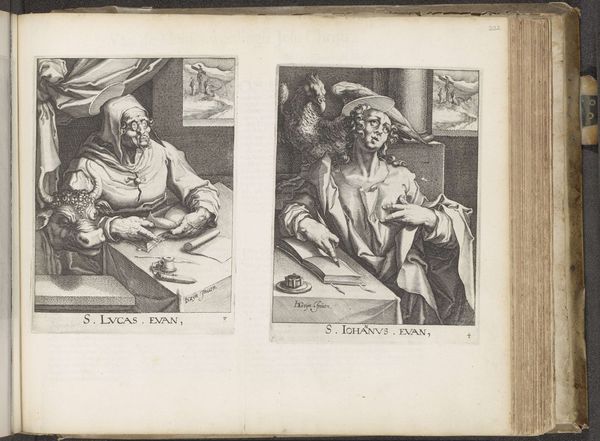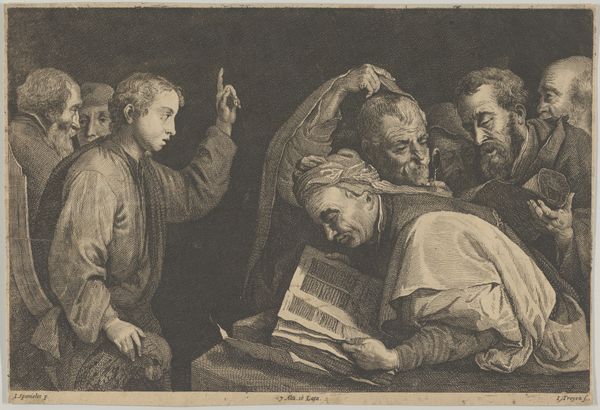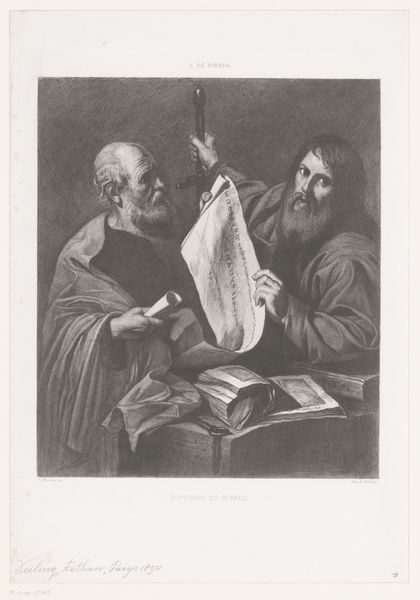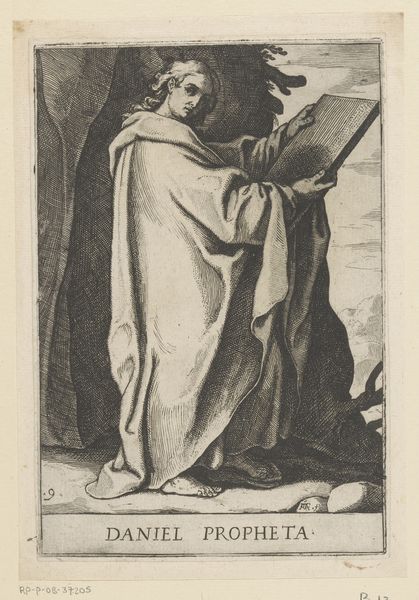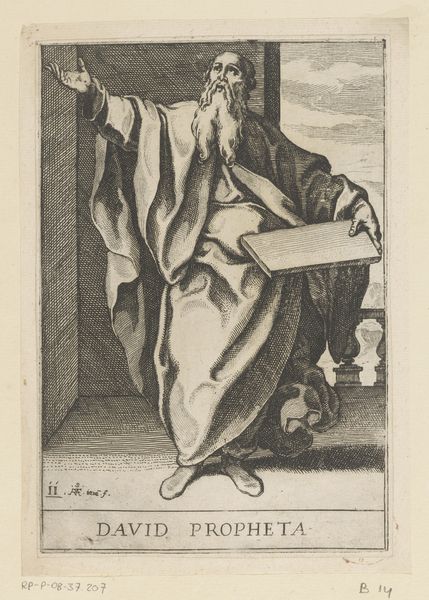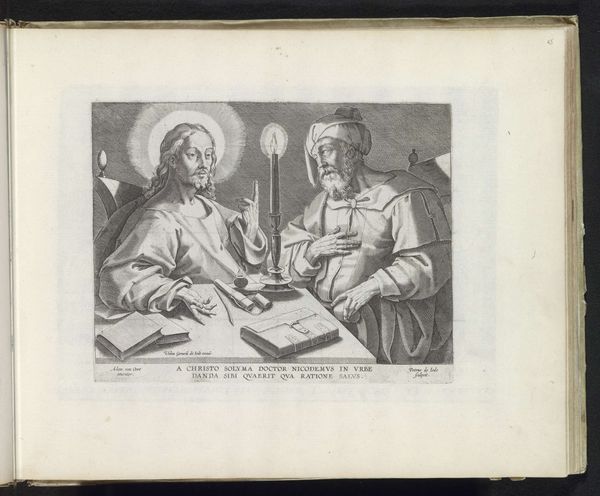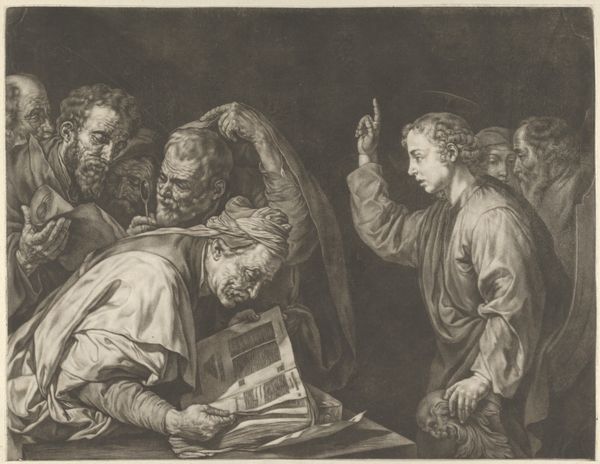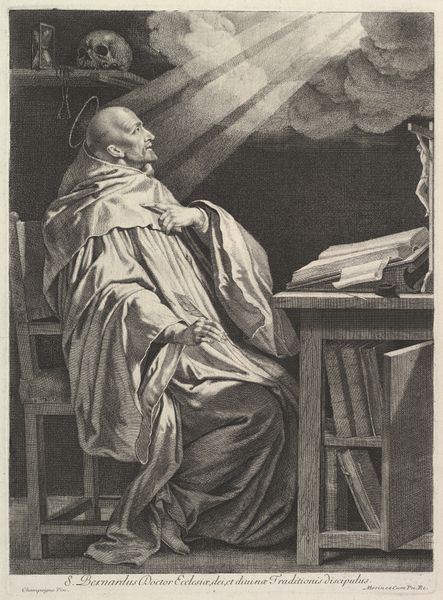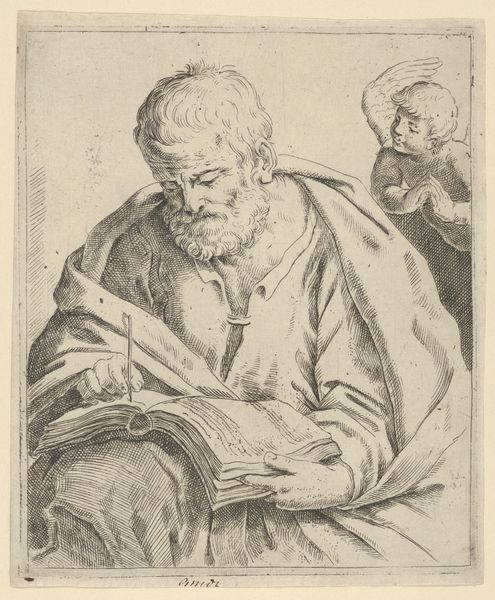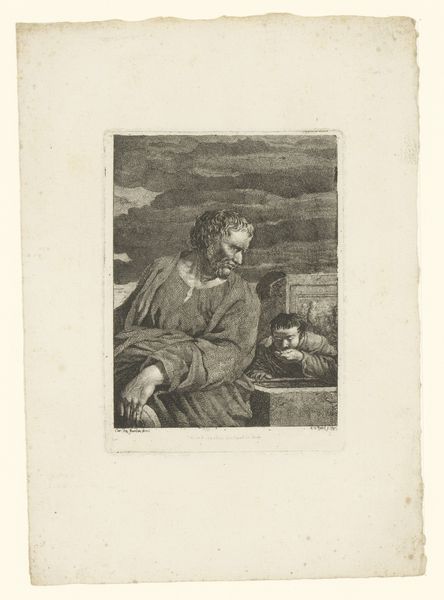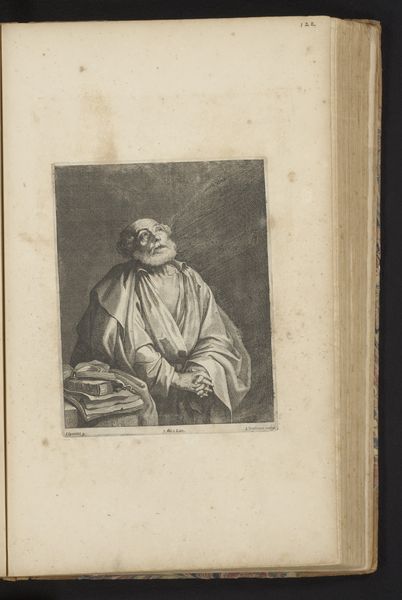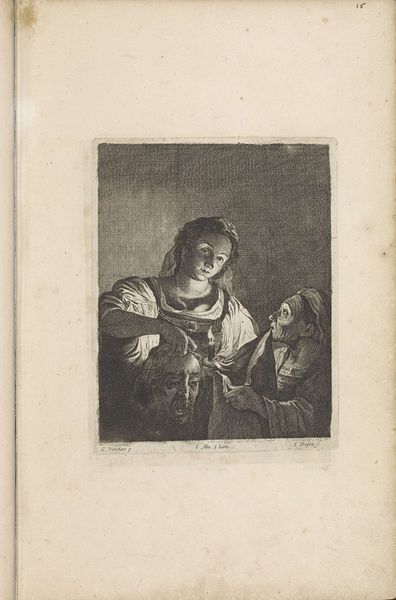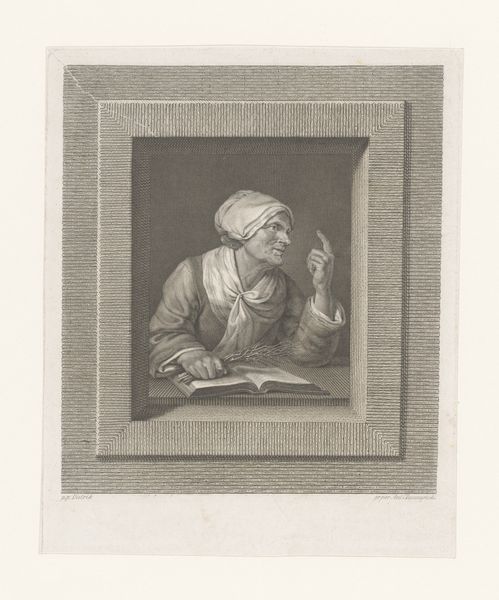
drawing, print, paper, ink, engraving
#
portrait
#
drawing
#
baroque
#
ink paper printed
# print
#
pencil sketch
#
charcoal drawing
#
paper
#
charcoal art
#
ink
#
history-painting
#
academic-art
#
engraving
#
watercolor
Dimensions: height 198 mm, width 143 mm, height 199 mm, width 143 mm
Copyright: Rijks Museum: Open Domain
Curator: This print, tentatively dated between 1616 and 1654, is attributed to Nicolaes Ryckmans and presents us with twin portraits of Apostles Judas Thaddeus and Matthias. Look closely at how each is rendered. Editor: They appear as studies in contrast, not just in composition, but also in the cultural narratives they represent. One immersed in scripture, the other clutching an axe. What does that juxtaposition tell us about the role of these figures? Curator: The images speak to different aspects of apostleship, doesn't it? Judas Thaddeus, absorbed in sacred text, embodies wisdom and interpretation. The book, the halo—it evokes centuries of theological tradition. It represents spiritual devotion but can also imply exclusivity. Editor: Absolutely. While Matthias holding the axe confronts us directly, reminding us that faith, historically, hasn't always been peaceful. Matthias replaces Judas Iscariot, but carries with him associations to tools that would dismantle. That axe could represent disruptive change and societal reform—perhaps a visual echo of social upheaval during the reformation. Curator: The placement of halos also contributes—Judas Thaddeus’s halo is centered, affirming his holiness, Matthias’s is off, at an angle, more subtly suggesting holiness. Consider that the printmaker used similar visual markers to represent the individual natures, and maybe even martyrdom, of the apostles. The object, in each hand, is symbolic to their narrative and to their visual presentation. Editor: The tool, or lack thereof, can become a source of symbolic representation for social values within faith, too. These aren't just portraits of individuals; they're arguments, aren’t they, about what constitutes righteous action. Curator: It's a very thought-provoking comparison between devotion and intervention, inviting us to reflect on these figures. Editor: These considerations about representation open our eyes, I think, and allow us to contemplate what faith and devotion mean from varying perspectives in society.
Comments
No comments
Be the first to comment and join the conversation on the ultimate creative platform.
